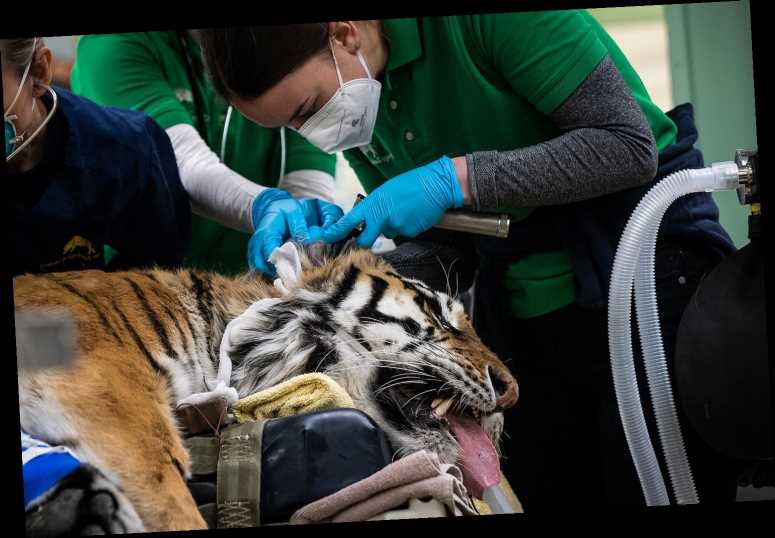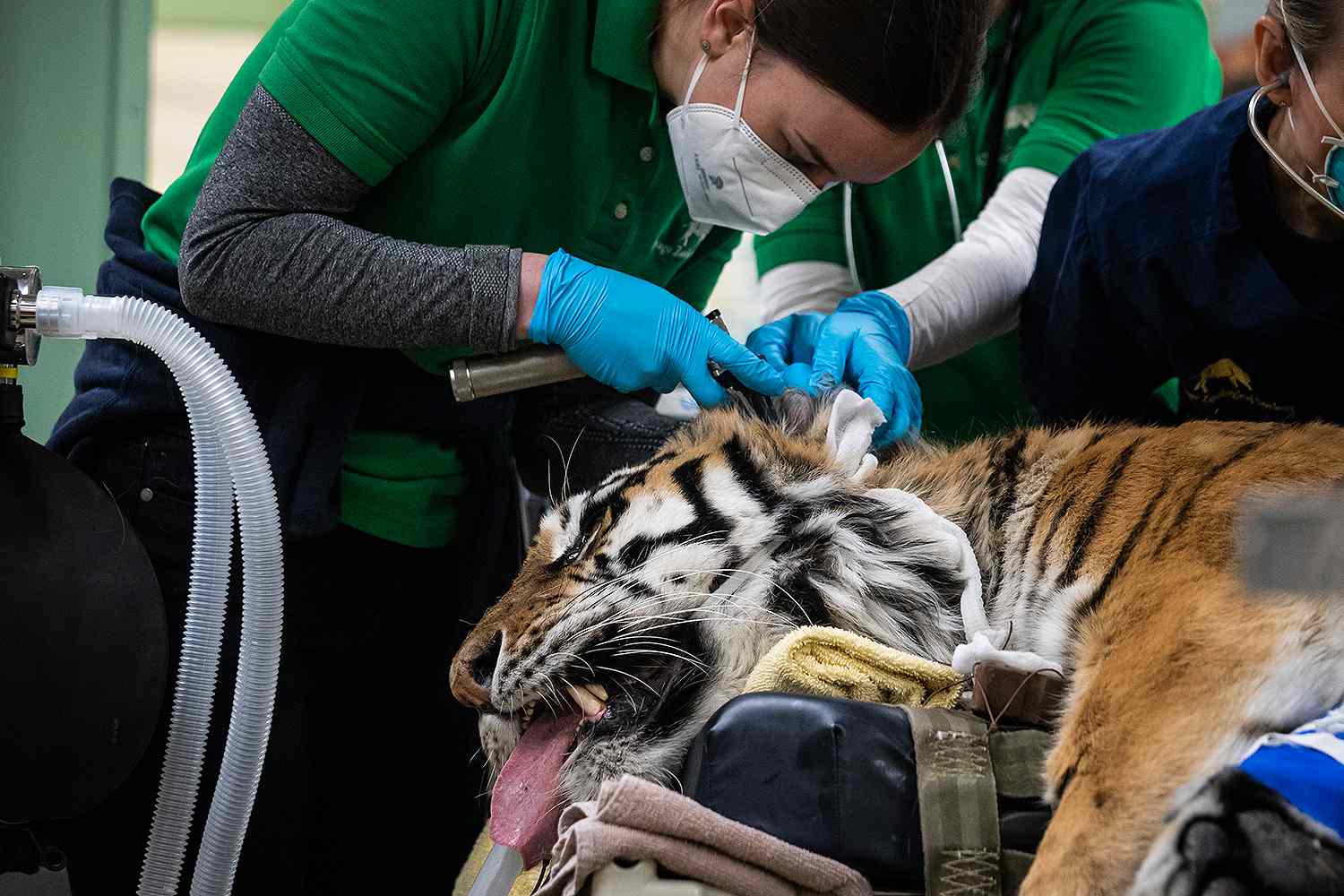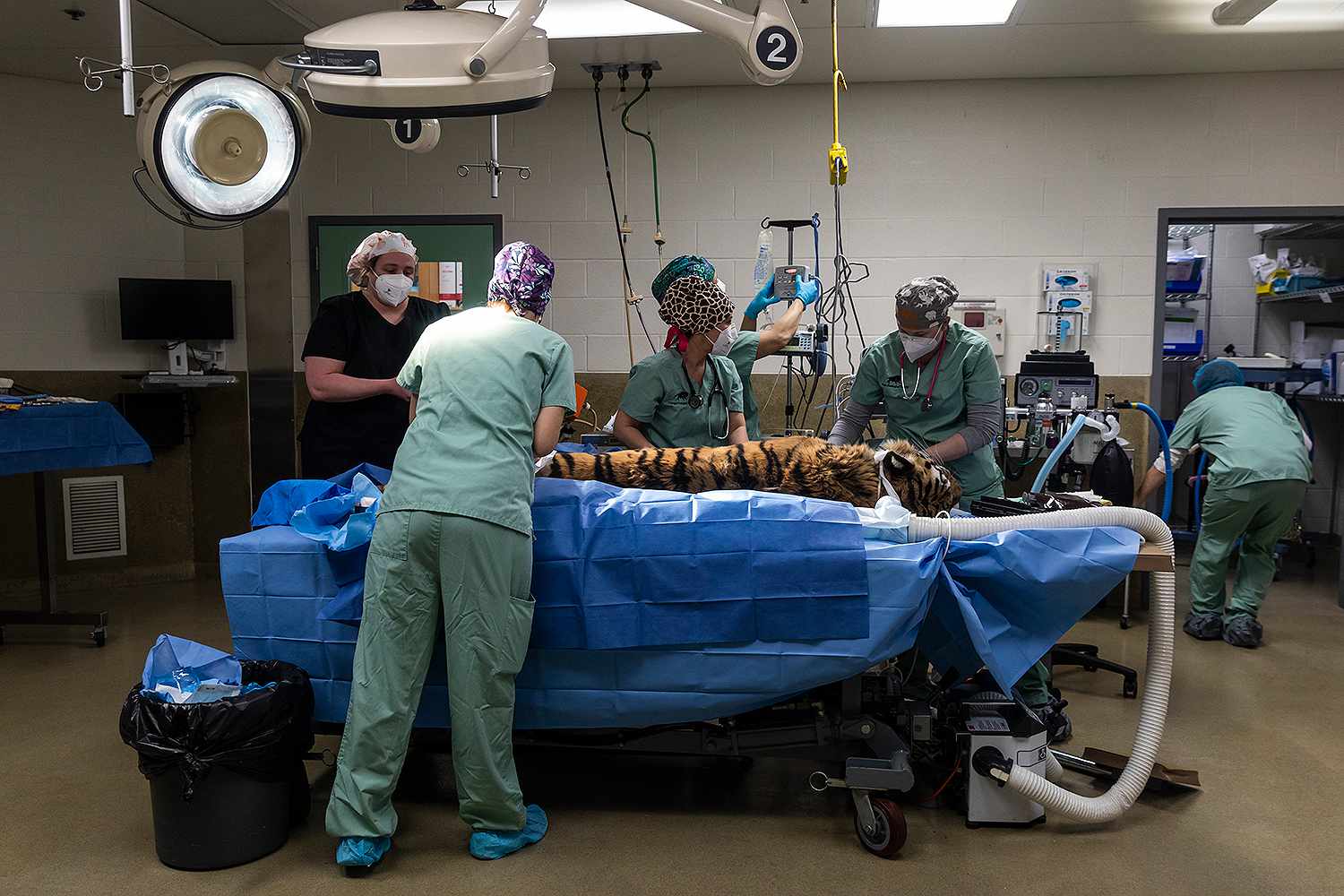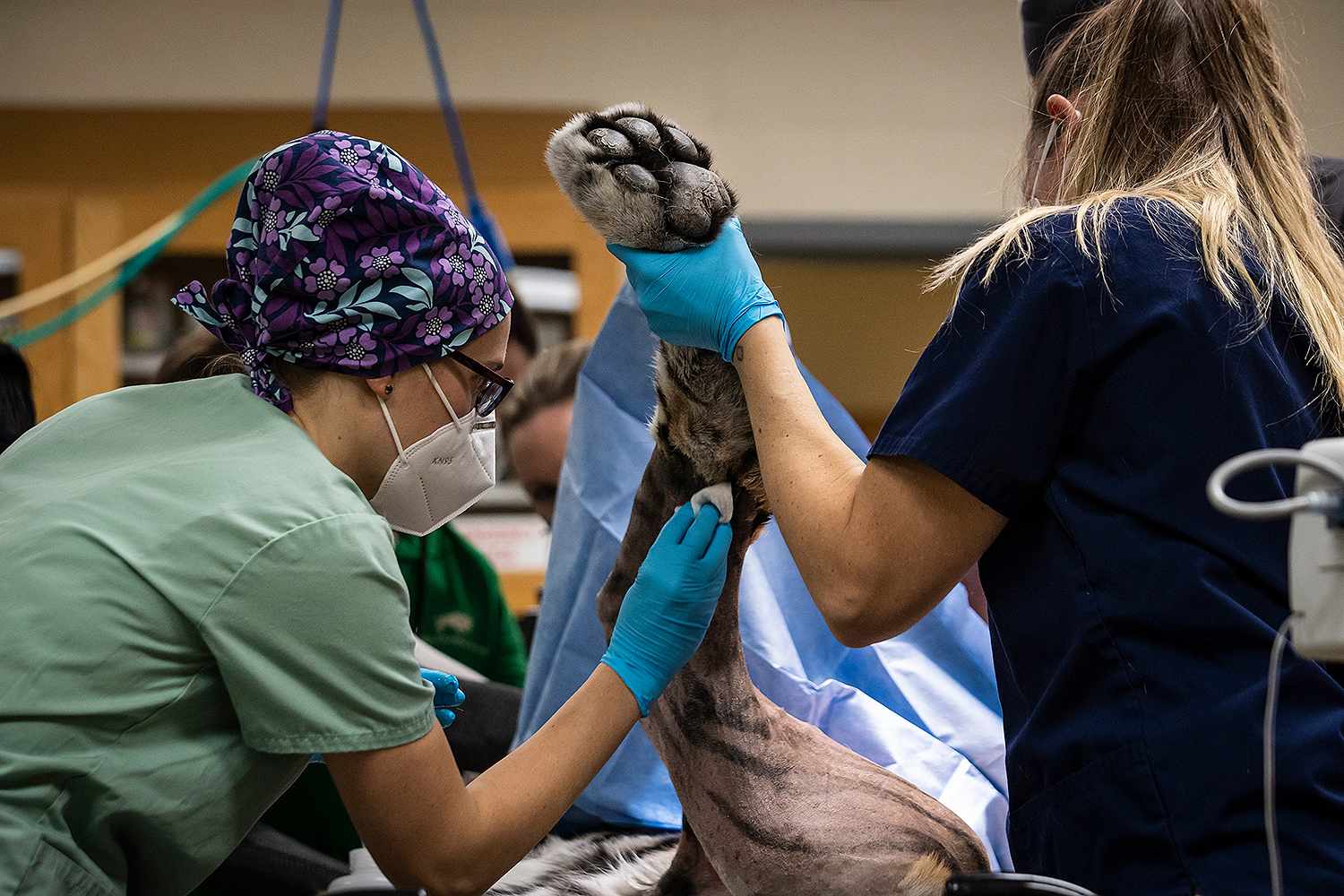Malena is hoping to move a bit easier after getting a hip replacement.
According to The Associated Press, the 10-year-old Amur tiger, who suffers from arthritis, underwent the surgery at Chicago's Brookfield Zoo on Wednesday.
Malena arrived at the Illinois zoo last year with arthritis of the hip, which is a normal degenerative issue for older big cats. The zoo tried treating the issue with pain medication but realized after doing a CT scan of Malena's hips that she needed surgery to improve her quality of life.
"We're hopeful that by doing the surgery now, we're able to really get on top of this arthritis and keep her comfortable so that she's able to live a good quality life for many years down the road," Dr. Michael Adkesson of the Chicago Zoological Society told the AP.
The hip replacement took over 6 hours to complete and was led by Dr. James Cook of the University of Missouri. And while the complicated procedure took longer than expected, Dr. Cook is confident the surgery went well.
"The first six weeks are critical, but we've given it our best shot and are pleased with the result," Cook said, adding that Malena appeared to have a full range of motion in her hips following the replacement.
https://www.youtube.com/embed/wv6fXbywPNM
The tiger is not the first big cat to undergo a hip replacement. A cheetah, a snow leopard, and a tiger have all received hip replacements in the past with varying results. These past surgeries have all used non-custom implant designs for the hip replacement piece, so the Brookfield Zoo team is hoping the custom implant they had made for Malena will led to greater post-op success.
The implant was designed by the Florida-based medical device maker Arthrex, which used data from Malena's CT scan to create the custom implant that they donated to the zoo. With the tiger's new hip in place, the Brookfield Zoo is now focused on Malena's rehab and recovery.
"Obviously, from a therapy standpoint, we're not able to get in with the tiger the same way we might do physical therapy on a dog or a domestic cat," Dr. Adkesson said. "But our care staff have a wonderful relationship with these animals, and they'll be able to get her up and kind of moving around by asking her to come to different areas of the enclosure."
Source: Read Full Article








